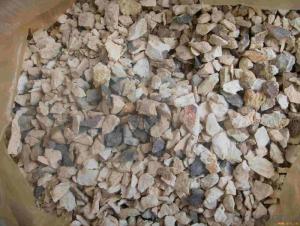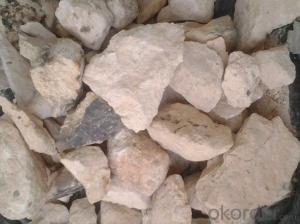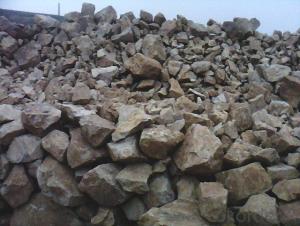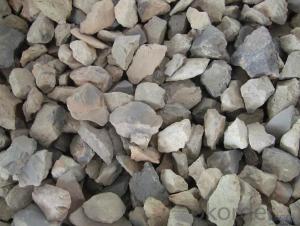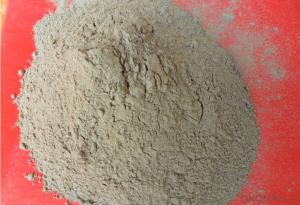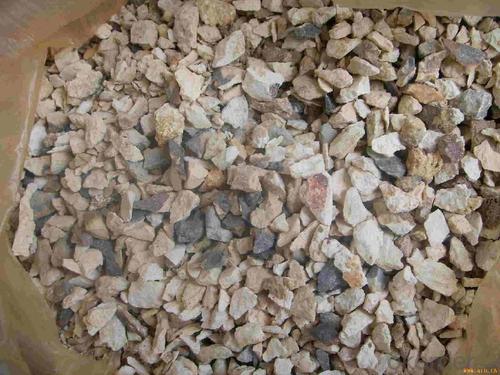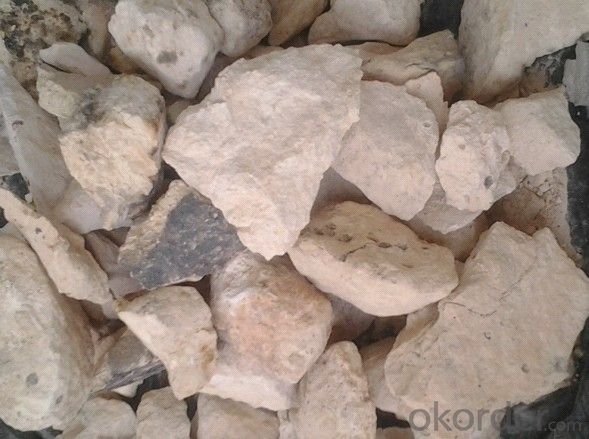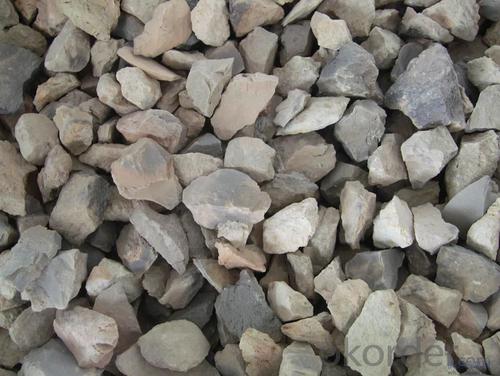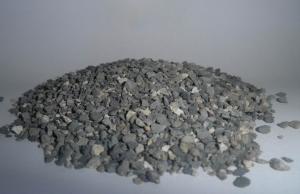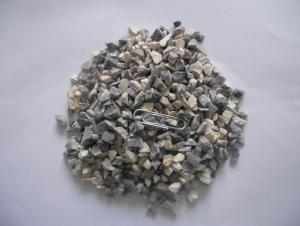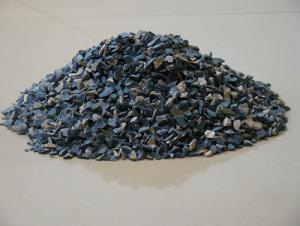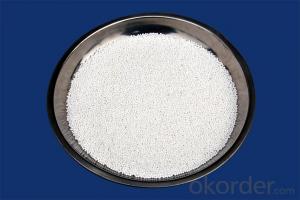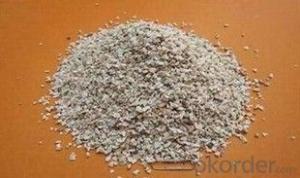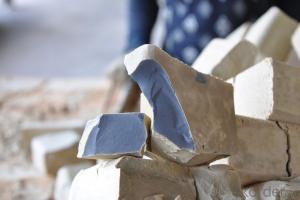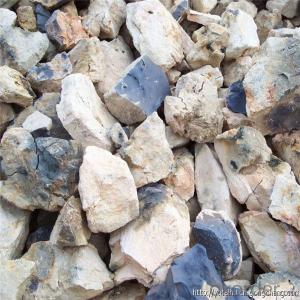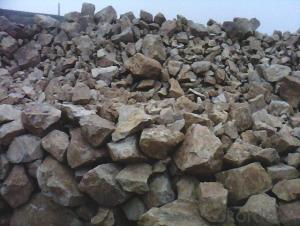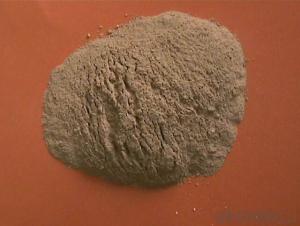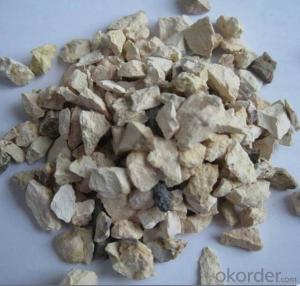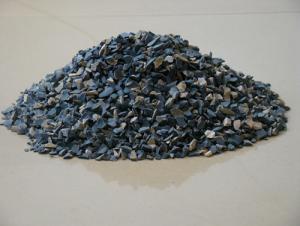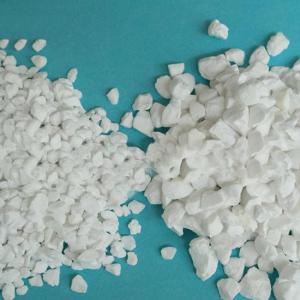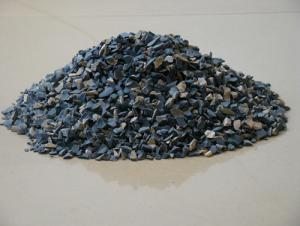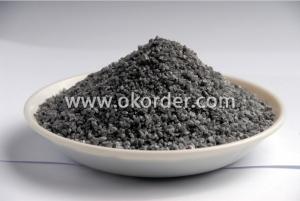Raw Materials for Refractory:Rotary Kiln Bauxite 85 & Homogenized Bauxite 88
- Loading Port:
- Tianjin
- Payment Terms:
- TT OR LC
- Min Order Qty:
- 11 m.t.
- Supply Capability:
- 10000000 m.t./month
OKorder Service Pledge
OKorder Financial Service
You Might Also Like
Rotary Kiln Bauxite 85. Homogenized Bauxite 88
1.Structure of Calcined Bauxite 88 Description
The products are produced by corundum and chromium oxide as main materials, formed from casting, being treated under high temperature. Reheating furnace chrome corundum slideway brick. High-speed heat flow erosion and ball dynamic conditions of wearing and tearing, and the low-melting materials under high temperature erosion, infiltration of rotary kiln body, the demanding is rigour for the refractory materials. These materials have high temperature strength, wear resistance, corrosion resistance, long-life time and other excellent properties.
2.Main Features of the Calcined Bauxite 88
Calcined bauxite is one of the principal ore of aluminum. Calcined bauxite contains hydrous aluminum oxides and aluminum
hydroxides, formed through the laterization of aluminous rocks in tropical and subtropical areas .Calcined bauxite is obtained by calcining (heating)superior grade bauxite at high temperature (from 85OC to 1600C) .This removes moisture there. By increasing the alumina content,compared to an alumina content of about 57%to 58% in raw bauxite, calcined bauxite has an alumina content of 84%to88%.The heating is carried out in rotary kilns.
3.Main usage of the Calcined Bauxite 88
1) The bauxite for aluminum industry in defense, aerospace, automotive, electrical, chemical, and daily supplies;
2) Bauxite clinker processed into fine powder and made after the casting mold. Used in military, aerospace, communications, instrumentation, machinery and medical equipment sector;
4. Calcined Bauxite 88 Images
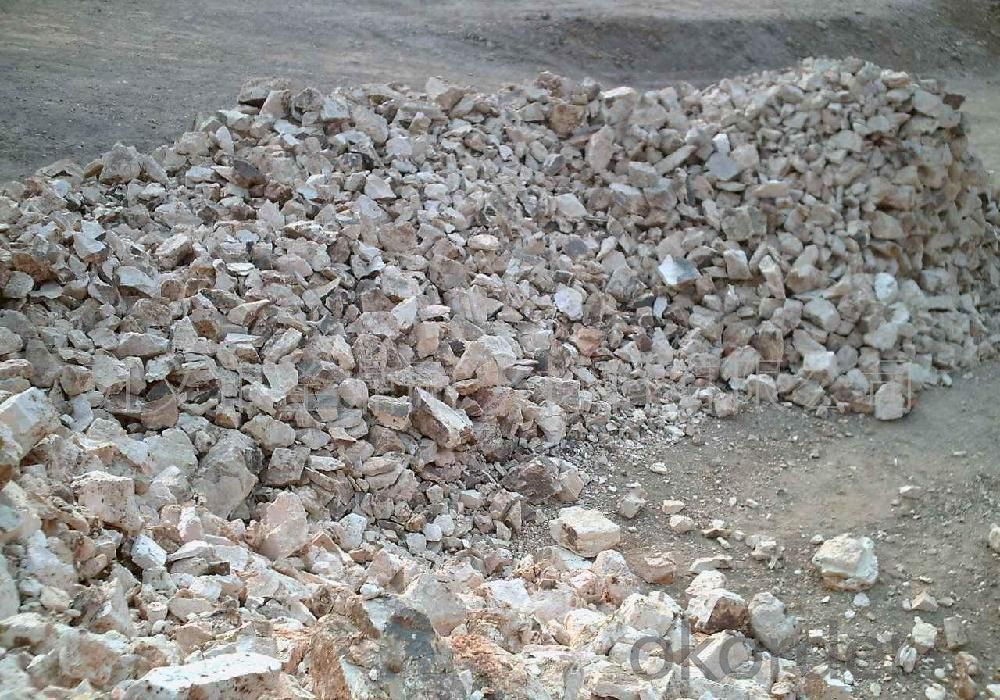
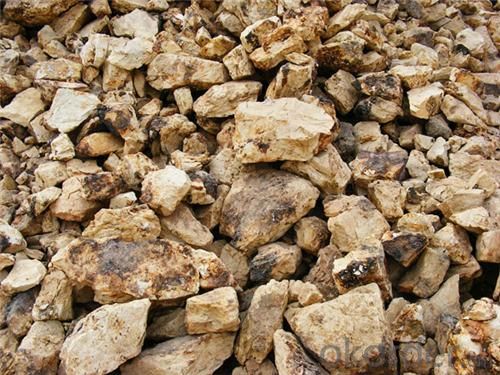
5. Calcined Bauxite 88 Specification
| No | Al2O3 (%) | Fe2O3 (%) | R2O (%) | TiO2(%) | B.D |
88 bauxite | ≥87.5 | ≤2.0 | ≤0.55 | ≤4.5 | ≥3.25 |
87 bauxite | ≥85 | ≤2.0 | ≤0.55 | ≤4.5 | ≥3.23 |
86 bauxite | ≥80 | ≤2.0 | ≤0.60 | ≤4.4 | ≥3.20 |
85 bauxite | ≥85 | ≤2.0 | ≤0.60 | ≤4.2 | ≥3.15 |
82/83 bauxite | ≥82 | ≤2.0 | ≤0.60 | ≤4.0 | ≥3.10 |
6.FAQ of Calcined Bauxite 88
1). Q: Are you a factory or trading company?
A: We are a factory.
2). Q: Where is your factory located? How can I visit there?
A: Our factory is located in ShanXi, HeNan, China. You are warmly welcomed to visit us!
3). Q: How can I get some samples?
A: Please connect me for samples
4). Q: Can the price be cheaper?
A: Of course, you will be offered a good discount for big amount.
Remarks:
1) If you have special requirement for the specifications, we can have a talking to know if we can meet it. Usually, our skills and equipments are no problem. It's up to the production cost related to the bauxite raw ores we purchase;
2) Wide sizes variety is available as per customer's request.
- Q: What materials is silicious thermal insulation board made of?
- Siliceous insulating panels use quartz sand as the main material and are composited with fiber. Of course the amount of insulation board materials used by different companies is different. In terms of Hua Heng, siliceous insulating boards can be divided into insulating panels for casting slabs and insulation board for intermediate tank according to the usage. The latter one can be divided into liner plate (wallboard, side panels, baseboard) and impingement plate based on parts it is used on. Siliceous insulating panels use quartz sand as the main material and are composited with fiber. Method for manufacturing a silicon insulating panel is divided into semi-dry method and wet method. It is used for casting ingot insulation cap of the killed steel and continuous casting tundish.
- Q: What are some of the new refractories and what are their characteristics?
- Alumina, a better refractory material, is a new type of ceramic refractory, the characteristics are unclear.
- Q: Can anyone tell me the requirements of the refractory masonry??
- Kaolin is mainly composed of kaolinite crowded minerals that is in the shpe of tiny flake which is less than two microns, tube and folding flake. The kaolinite crowded mineral consists of kaolinite, dickite, pearl stone, halloysite, etc. and its ideal chemical formula is AL2O3-2SiO2-2H2O. The main mineral component of it is kaolinite and halloysite.In addition to the kaolinite crowded mineral, kaolin is accompanied by other minerals like montmorillonite, illite, pyrophyllite, quartz and feldspar. The chemical composition of kaolin contains large amounts of AL2O3, SiO2, and a small amount of Fe2O3, TiO2, and traces of K2O, Na2O, CaO and MgO, etc. The white pottery is made of kaolin. At present, the internationally accepted scientific name for kaolin is Kaolin which is derived from the kaolin mountain in the eastern suburb of kaolin village in Jingdezhen.Such special properties of kaolin as its plasticity,cohesiveness, certain dry strength, sinterability and firing whiteness make it the main raw material for ceramic production; properties like whiteness, softness, high dispersibility, and adsorbability allows it to be widely used the paper industry. In addition, the kaolin is also widely used in some industrial sectors such as rubber, plastics, refractories, oil refining as well as agriculture sector and cutting-edge technology for national defense. According to the purpose and requirements, kaolin can be processed and purified and it can be used to manufacture activated clay.
- Q: Do you know the refractories?
- Definition of refractory: inorganic non-metallic material with fire resistance greater than 1580 degrees is refractory.Refractory material is a part of material industry. It is named refractory material for thermal kiln. Refractory materials are divided into conventional refractory materials and special refractory materials, and conventional refractory materials are used in metallurgical furnaces, cement kilns, glass kilns and other thermal furnace lining materials, mostly processed from natural raw materials. Special refractory materials are of high purity, mostly oxide synthetic materials, used in special smelting equipment, or special parts of kilns.
- Q: What kind of fireproof material is used for steel structure?
- Brushing or spraying the coating on the surface of steel structure to prevent burning and insulate heat. It also prevents undermining the rolled steel from rapid temperature elevation and avoid collapse of building for lose of supporting capacities. Agglutination material are classified as fireproof coatings for steel structures which is solvent based and Water-based steel structure fire retardant coatings. Fireproof coatings for steel structures which is solvent based are subdivided into fireproof coatings for steel structures which is solvent based with low benzene content and fireproof coatings for steel structures which is solvent based with high benzene content (TVOC≤600g / L, benzene ≤5g / kg). It can be divided by thickness. ultra-thin (CB) fireproof coatings (coating thickness ≤3mm), thin (B) fireproof coatings (3mm & amp; lt; coating thickness ≤7mm) and thick (H) steel structure fire retardant coating (7 mm & amp; lt; coating thickness ≤45㎜). The coating can be divided into non-intumescent fire retardant coating and intumescent fire retardant coating according to the the expansion properties. Slim (CB) and fire-resistant coating for steel structure and thin(B) fireproof coatings is intumescent fire retardant coating, thick (H) fire-resistant coating for steel structure is intumescent fire retardant coating. Unprotected steel structure has fire endurance of 0.25 hours.
- Q: What are the specifications of fire resistant bag?
- Fire resistant bag is featured by wear resistance, resistance to heat, shock, acid and alkali, somke, fire, bacteria, mould and static electricity. Fire resistant bag is generally used for table top, desktop, wall face, cabinet, office furniture, wall-hung cupboard, etc. The common specifications include: 2135mm×915mm, 2440mm×915mm, 2440mm×1220mm, thickness 0.6-1.2mm. I hope it can help you.
- Q: Who knows how to divide the building fire grade and fire resistance grade?
- I hope to help you building fireproof rank division is one of the most basic measure in building fire safety technical measures, Building's fireproof rank is divided into class one, two, three, four according to China's architectural design specification. Fire-resistant capability of the highest level is the strongest; Fire resistance of four level of the weakest. The fire resistance level of a building depends on the combustion performance and fire resistance of the building components that comprise the building. The so-called building component refers to a series of basic components, such as wall, foundation, beam, column, floor, stair, ceiling and so on. The judgment condition of the fire resistance There are three conditions for components' fire resistance limit to be reached, namely, the fire resistance limit of the building component: Loss of support and integrity; loss of time to fire the role of the time; as long as any of these three conditions is met, it will reach its limit of fire. Hope my answer will help you.
- Q: Why do magnesium oxide refractory bricks can be made into refractories?
- Because the magnesium oxide, commonly known as magnesia, which is a basic oxide, with the common property of alkali oxides and belongs to the cementitious material . It is white or light yellow powder, odorless, tasteless, non-toxic and a typical of alkaline earth metal oxide, whose chemical formula is MgO. It is white powder, with melting point of 2852 ℃, boiling point of 3600 ℃ and relative density of 3.58 (25 ℃). The magnesium oxide that is soluble in acid and ammonium hydroxide solution has high insulation properity. After high temperature of above 1000 ℃ burning, it will transform into crystals, and when rising above 1500 ℃ , it will turn into dead-burned magnesium oxide (also known as the magnesia) or sintered magnesia. So the performance of magnesium oxide refractory bricks is good, and the fire resistance of it is very strong.
- Q: What is the appropiate thickness if fire resistant time for ultra thin steel structure coating is 2.5 hours?
- Hello steel structure can adopt surrounding concrete or brick, fireproof coating, fireproof board coating and composite structure for its fire resisitance. Fire resisitance board can be divided into thick fire protection plate and thin plate, the thickness of the plate thickness of the fire is between 20 ~ 50mm, mainly includes calcium silicate fireproof board and expansion boring stone fire board, the main varieties are KB board, CF; thin fireproof plate is between 6 ~ 15mm thick, the main varieties include enforced short fiber cement plate, ordinary enforced fiber silicate calcium board and glass cloth reinforced inorganic board.
- Q: Which brand of refractory fiber hard thermal insulation board is better?
- Thermal insulation materials are divided into two types: porous material and heat reflecting material. The former uses the air void contained in the material to maintain thermal insulation itself for the heat conductivity coefficient of air or inert gas within the voids is low, such as foam material, fibers and other materials; the latter material has a high coefficient of reflection which can reflect the heat, such as gold, silver, nickel, aluminum foil or metallic coated polyester and polyimide thin films. Aerospace industry has strict requirement for the weight and volume of thermal insulation material, and it is often also required to has the properties of noise absorption, vibration attenuation, and anti-corrosion. Different aircrafts have different requirements for thermal insulation materials. Aircraft cabin and cockpit usually use foam, ultra-fine glass wool, high silica cotton to maintain thermal insulation. Earlier missile head uses phenolic foam plastic as thermal insulating material. With the application of polyurethane foam with good thermal endurance, the single insulating material has been developed to sandwich construction. A few millimeters foaming coating is coated on the skin outside the missile instrument bay, it is anti-corrosion coating at room temperature and when aerodynamic heating reach 200 ° C or more, it will generate foam evenly thus maintaining thermal insulation. Artificial earth satellite moves in an environment where the temperature varies from high to low, so it must use laminated thermal insulation material with high reflecting performance, which is usually made up of dozens of layers of aluminum film, aluminized polyester film, and aluminized polyimide film. In addition, the successful development of the surface thermal insulated tiles has solved the problem of thermal insulation of the space shuttle, it also marks a higher level of development of insulation materials.
Send your message to us
Raw Materials for Refractory:Rotary Kiln Bauxite 85 & Homogenized Bauxite 88
- Loading Port:
- Tianjin
- Payment Terms:
- TT OR LC
- Min Order Qty:
- 11 m.t.
- Supply Capability:
- 10000000 m.t./month
OKorder Service Pledge
OKorder Financial Service
Similar products
Hot products
Hot Searches
Related keywords
